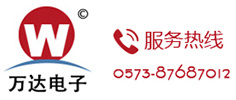News Center
19
2022
-
08
What are the main types of inductors? The structure and classification of inductors
Author:
ICGOO Online Mall
In order to strengthen electromagnetic induction, people often wind the insulated wire into a coil with a certain number of turns. Inductors are also called chokes, reactors, and dynamic reactors. Inductance (inductance coil) is an electromagnetic induction element wound with insulated wires (such as enameled wire, yarn-covered wire, etc.), and is also one of the commonly used components in electronic circuits. It is an element that can convert electrical energy into magnetic energy and store it. If the inductor is in a state with no current flowing through it, it will try to block the flow of current through it when the circuit is on; if the inductor is in a state with current flowing through it, it will try to maintain the current flow when the circuit is off. So what are the main types of inductors? The following is an introduction to the structure and classification of inductors.
The structure of the inductor
Inductors are generally composed of skeletons, windings, shields, packaging materials, magnetic cores or iron cores.
(1) Skeleton: The skeleton generally refers to the bracket for winding the coil. Some larger fixed inductors or adjustable inductors (such as oscillating coils, choke coils, etc.), most of which are wrapped with enameled wire (or yarn-covered wire) on the skeleton, and then the magnetic core or copper core, iron core, etc. Installed into the inner cavity of the skeleton to increase its inductance. The skeleton is usually made of plastic, bakelite, and ceramics, and can be made into different shapes according to actual needs. Small inductors (such as color-coded inductors) generally do not use a bobbin, but directly wind the enameled wire around the core. Air-core inductors (also known as unwrapped coils or air-core coils, mostly used in high-frequency circuits) do not use magnetic cores, skeletons and shields, etc., but are first wound on the mold and then take off the mold, and the coil is pulled between each circle. Drive a certain distance.
(2) Winding: Winding refers to a group of coils with specified functions, which is the basic component of the inductor. There are single-layer and multi-layer windings. There are two types of single-layer windings: dense winding (conductors are wound one by one) and intermediate winding (there is a certain distance between each wire during winding); multi-layer windings have layered flat winding, random winding Winding, honeycomb winding, etc.
(3) Magnetic core and magnetic rod: The magnetic core and magnetic rod are generally made of nickel-zinc ferrite (NX series) or manganese-zinc ferrite (MX series) and other materials. E" shape, can shape and other shapes.
(4) Iron core: The iron core material mainly includes silicon steel sheet, permalloy, etc., and its shape is mostly "E" type.
(5) Shielding cover: In order to prevent the magnetic field generated by some inductors from affecting the normal operation of other circuits and components, a metal screen cover (such as the oscillation coil of a semiconductor radio, etc.) is added to it. The use of shielded inductors will increase the loss of the coil and reduce the Q value.
(6) Packaging material: After some inductors (such as color code inductors, color ring inductors, etc.) are wound, the coils and magnetic cores are sealed with packaging materials. The encapsulation material is plastic or epoxy resin.
Classification of Inductors
(1) Classification by inductance value: fixed inductance, variable inductance.
(2) Classification by winding structure: single-layer coil, multi-layer coil, honeycomb coil.
(3) Classification according to the nature of the magnetic conductor: air core coil, ferrite coil, iron core coil, copper core coil.
(4) Classification according to the nature of work: antenna coil, oscillation coil, choke coil, trap coil, deflection coil.
Main Types of Inductors
Main Types of Inductors - Small Inductors
Small fixed inductors are usually wound directly on the magnetic core with enameled wires. They are mainly used in circuits such as filtering, oscillation, notch, and delay. They are available in sealed and non-sealed packages. There are both vertical and horizontal shape structures.
(1) Vertical sealed fixed inductor: Vertical sealed fixed inductor adopts the same direction pin, the domestic inductance range is 0.1~2200μH (directly marked on the shell), the rated working current is 0.05~1.6A, and the error range is It is ±5%~±10%. The imported inductance and current range are larger, and the error is smaller. There are imported TDK series color-coded inductors, and the inductance is marked on the surface of the inductor with color dots.
(2) Horizontal sealed fixed inductors: Horizontal sealed fixed inductors use axial pins, and domestically produced LG1.LGA, LGX and other series.
Main Types of Inductors - Tunable Inductors
A tunable inductor is a commonly used inductive device. There are oscillating coils for semiconductor radios, line oscillating coils for TV sets, line linear coils, intermediate frequency trap coils, frequency compensation coils for audio, and wave blocking coils.
Main Types of Inductors - Blocking Inductors
The choke inductor refers to the inductance coil used to block the AC current path in the circuit. It is divided into a high frequency choke coil and a low frequency choke coil.
(1) High-frequency choke coil: The high-frequency choke coil is also called a high-frequency choke coil, which is used to prevent the passage of high-frequency alternating current. High-frequency choke coils work in high-frequency circuits, and mostly use hollow or ferrite high-frequency magnetic cores, the skeleton is made of ceramic materials or plastics, and the coils are made of honeycomb-type segmented winding or multi-layer flat-wound segmented winding.
(2) Low-frequency choke coil: The low-frequency choke coil is also called a low-frequency choke coil. It is used in circuits such as current circuits, audio circuits or field output, and its function is to prevent the passage of low-frequency alternating current.
The main types of inductors - wound inductors
It is characterized by a wide range of inductance (mH ~ H), high inductance precision, small loss (that is, large Q), large allowable current, strong inheritance of manufacturing process, simplicity, low cost, etc., but the disadvantage is that in the further small ization is restricted.
The ceramic core wire wound chip inductor can maintain a stable inductance and a relatively high Q value at such a high frequency, so it occupies a place in the high frequency circuit.
Main Types of Inductors - Multilayer Inductors
It has good magnetic shielding, high sintering density and good mechanical strength. The disadvantage is that the qualified rate is low, the cost is high, the inductance is small, and the Q value is low.
Compared with wire-wound chip inductors, it has many advantages: small size, which is conducive to the miniaturization of the circuit, closed magnetic circuit, will not interfere with the surrounding components, and will not be interfered by adjacent components, which is conducive to the stability of the components. High-density installation; integrated structure, high reliability; good heat resistance and solderability; regular shape, suitable for automated surface mounting production.
Main Types of Inductors - Thin Film Chip Inductors
It has the characteristics of maintaining high Q, high precision, high stability and small size in the microwave frequency band. The inner electrodes are concentrated on the same level, and the magnetic field distribution is concentrated, which can ensure that the parameters of the mounted device do not change much, and show good frequency characteristics above 100MHz.
Main Types of Inductors - Braided Inductors
The characteristics are that the inductance per unit volume at 1MHz is larger than other chip inductors, the volume is small, and it is easy to install on the substrate. Miniature magnetic components for power handling.
That's all for the main types, structures and classifications of inductors. With the continuous segmentation of the market, a variety of small inductors for specific application areas have gradually appeared. In data systems and industrial electronics applications, the demand for point-of-load power supplies has increased dramatically, creating opportunities for high-power, small-size inductors. Return to Sohu, see more
Statement: The opinions of this article only represent the author himself, Sohu is an information publishing platform, and Sohu only provides information storage space services.
Related News








